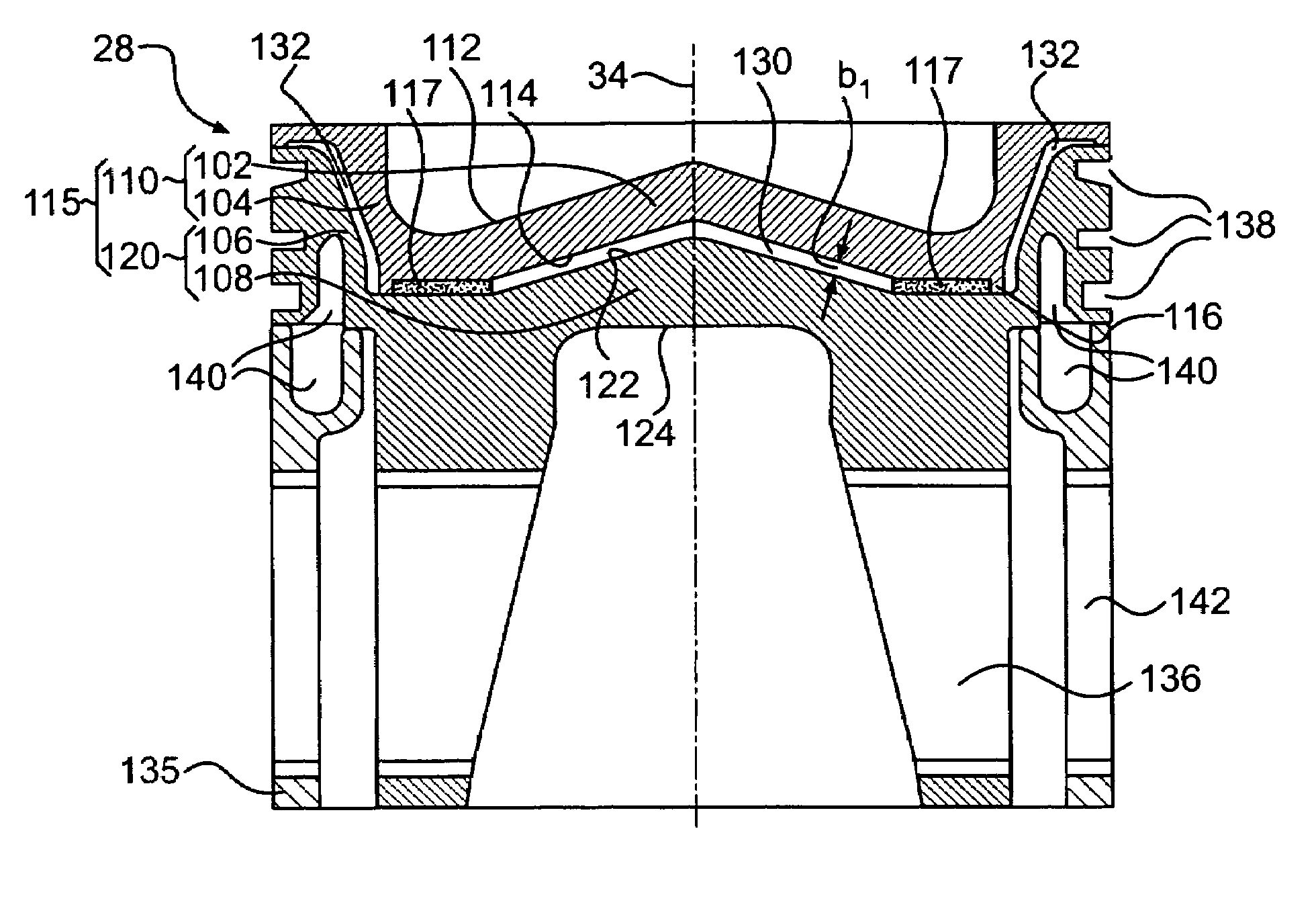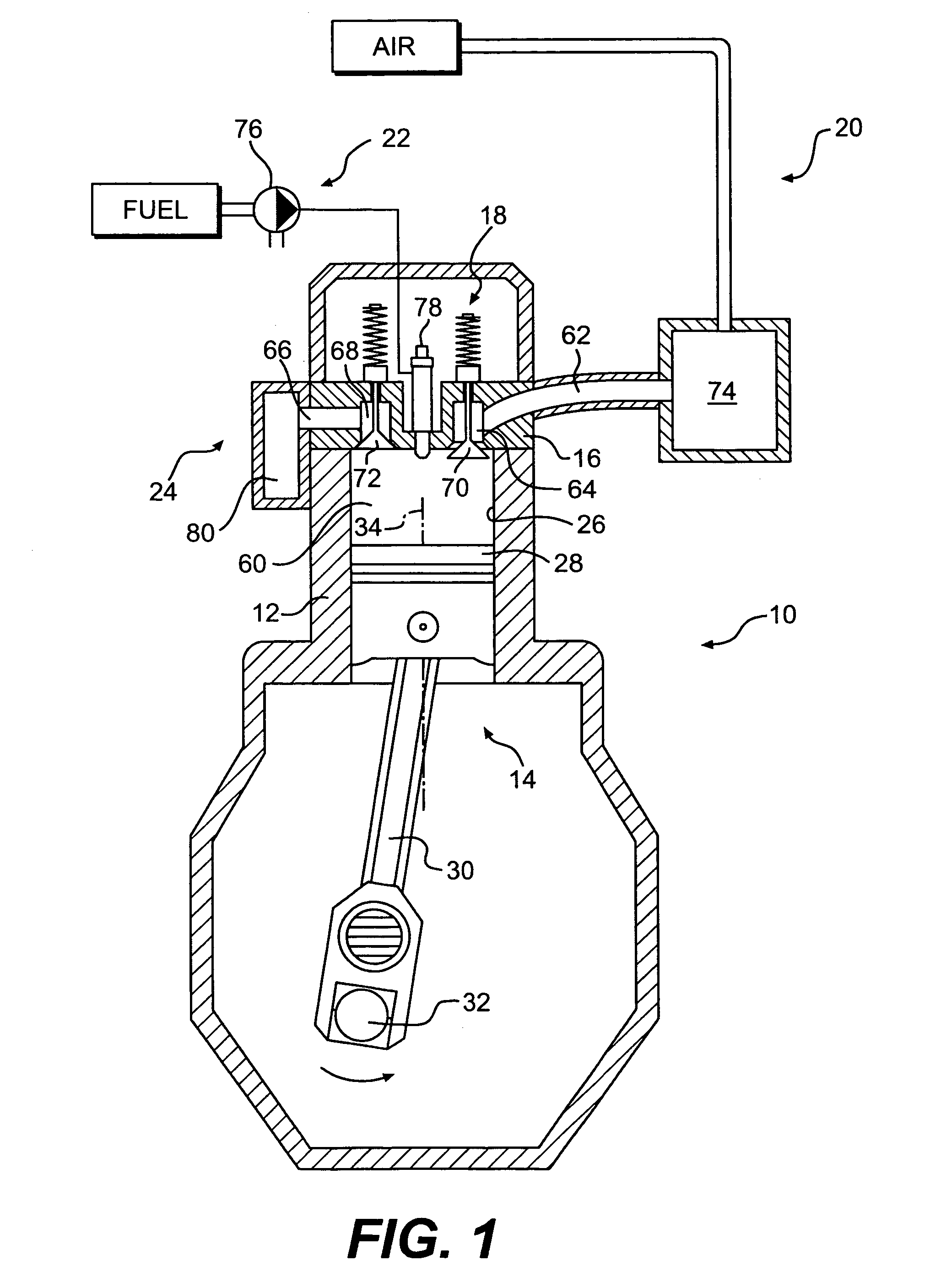Engine piston having an insulating air gap
a technology of insulating air gap and engine, which is applied in the direction of trunk pistons, cylinders, plungers, etc., can solve the problems of increasing damaging the piston, and not fully utilizing the insulating air gap to reduce heat extraction from the combustion chamber
- Summary
- Abstract
- Description
- Claims
- Application Information
AI Technical Summary
Benefits of technology
Problems solved by technology
Method used
Image
Examples
Embodiment Construction
[0016]An exemplary internal combustion engine (engine) 10 is illustrated in FIG. 1. Engine 10 is depicted and described as a 4-stroke diesel engine. However, it is contemplated that engine 10 may be any other type of engine, such as, for example, a 2-stroke diesel engine, a gasoline engine, or natural gas engine. Engine 10 may include an engine block 12, one or more piston assemblies 14, a cylinder head 16 associated with each piston assembly 14, a valve actuation system 18, an air induction system 20, a fuel system 22, and an exhaust system 24. Although the engine 10 is depicted as having one cylinder 26, engine 10 can have any number of cylinders 26.
[0017]Engine block 12 may be a central structural member defining a plurality of cylinders 26 (only one shown). One of piston assemblies 14 may be slidably disposed within each of cylinders 26. It is contemplated that the cylinders 26 may be disposed in an “in-line” configuration, a “V” configuration, or any other conventional configur...
PUM
 Login to View More
Login to View More Abstract
Description
Claims
Application Information
 Login to View More
Login to View More - R&D
- Intellectual Property
- Life Sciences
- Materials
- Tech Scout
- Unparalleled Data Quality
- Higher Quality Content
- 60% Fewer Hallucinations
Browse by: Latest US Patents, China's latest patents, Technical Efficacy Thesaurus, Application Domain, Technology Topic, Popular Technical Reports.
© 2025 PatSnap. All rights reserved.Legal|Privacy policy|Modern Slavery Act Transparency Statement|Sitemap|About US| Contact US: help@patsnap.com



